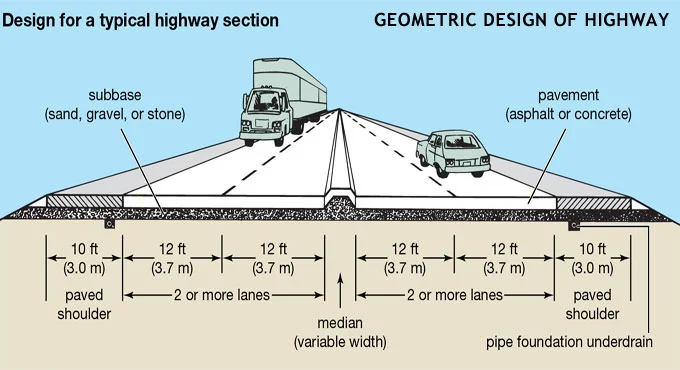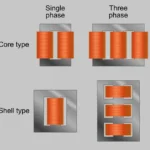Road Engineering Geometric Design

Road Geometric Design is a branch of road engineering concerned with the positioning of the physical elements of the pavement in terms of standards and constraints. The fundamental goals of geometric design are to optimize efficiency and safety while minimizing cost and environmental damage.
The geometric design also influences an emerging fifth goal known as “liability,” defined as road design that promotes broader community goals, including accessibility. access to jobs, schools, businesses, and homes, supporting multiple modes of transportation such as walking, cycling, public transport, and cars, while minimizing fuel consumption, emissions, and impacts. harmful to the environment.
Geometric pavement design can be divided into three main parts: alignment, profile, and cross-section. Combined, they provide a three-dimensional layout for a road.

- Alignment is the direction of a road, defined as a series of horizontal tangents and curves.
- The cross-section is the vertical surface of the line, consisting of vertex and sag curves, and straight contours connecting them.
3 . Cross-section shows the position and number of vehicle and bicycle lanes and sidewalks, along with their cross slope or banking. Cross-sections also show drainage features, pavement structure, and other items outside the category of geometric design.
Pavement Specialty
Longitudinal friction is equal to 0.35 to 0.4
Lateral friction is equal to 0.15
The highway must not be light reflecting in the day, but light reflecting in the night.
Permitted differences or unevenness must not be more than 150 cm/km.
Part The highway is parted into two the pavement and curbstone
The pavement possesses a gradient which is called camber.
The gradient or slope is for draining purposes.
The gradient is offered with respect to θ and computed in respect of n.
Camber = 1/n percent or tan θ Camber has 2 types.
The first is the triangular meniscus and the next is the parabolic meniscus.
Triangular camber can be calculated as y = w/2n Parabolic camber is y = 2×2/wn

y is camber height
w is road width
x is the length or distance from the peripheral line (side view)
Slope = 2(humer)
When the road becomes a vertical bend, the vertical height is called θ, which is the slope and inclination in the horizontal direction (indicating the camber) is suggested to be θ. This is called camber.
Pavement or Pavement Width Layout
The overall dimension (length) in which a major major expressway is built is called the platform width (which is 12m).It consists of two sidewalks.
years. Median where planting is taken.
BC. Shoulders of parts of the sidewalk. Both sides of 45 m will be surrounded by roads.
At the height of 80 m, there will be peripheral works. 150m is the control line.
The 150m control line is called the right-of-way.
Lane width For single lane – 3.75m
Two lanes without margins – 7.0m, Two lanes with margins – 7.5m
Middle lane fixed at 5.5m Multiple lanes – 3.5m each






